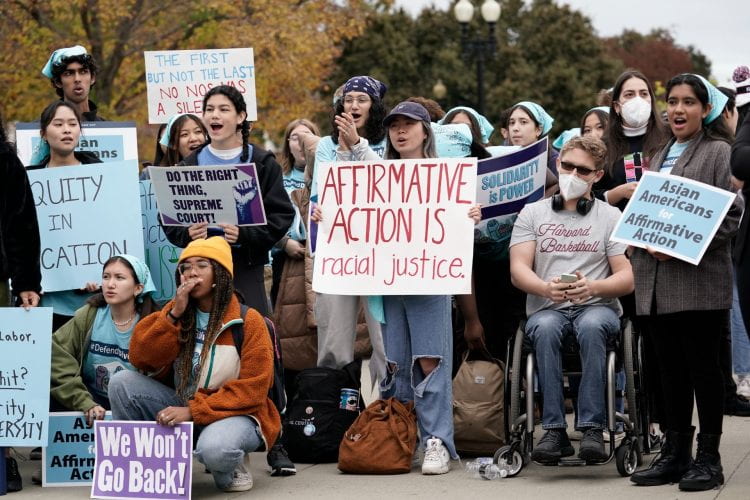By: Ava Osorio
Affirmative Action is a program that factored race into college admission decisions. This program has recently been overruled on June 29, 2023 by the Supreme Court sparking controversy.
The reason for this controversy is that Affirmative Action gave colleges and universities an obligation to take action and ensure that qualified minority applicants were recruited. Prior to Affirmative Action, many students have not been granted admission to prestigious universities due to unconscious biases of universities.
Affirmative Action was passed on September 24, 1965, by Lyndon B. Johnson in order to prohibit discrimination based on race, color, religion, and national origin by organizations that are federally funded. For context, there was a heavy move towards inclusivity during the 1960s because of the Civil Rights Movement. The goal of affirmative action was to allow historically excluded groups to attend college as they had faced long systemic barriers in the American education system (segregation, underfunding, fewer resources, low income) that made it difficult for them to normally do so. However, after 50+ years of affirmative action being implemented, everything was reversed when the Students for Fair Admissions Vs. Harvard’s (2023) case reached the Supreme Court. The US Supreme Court majority ruled that race-based affirmative action in college admissions violated the Equal Protection Clause of the 14th Amendment. In other words, they found that affirmative action was unconstitutional and therefore illegal.
Since the decision, there has been tremendous pushback. Many people have been recognizing that the Supreme Court is ignoring precedent around the 14th amendment. Those who disagree with the supreme court’s ruling, bring up that the 14th Amendment was written to directly ameliorate the conditions of racism after slavery. But through the Supreme Court’s actions, they are making it illegal to directly ameliorate the conditions of systemic racism that the 14th Amendment is meant to fight against. According to data, if anything affirmative action is needed more than ever. Since the peak of disintegration for black students in 1988, the share of intensely segregated minority schools, that is, schools that enroll 90-100% non-white students, has more than tripled from 5. 7% in 1988 to 18.2% in 2016. The problem if anything is getting worse, and we need to be taking bigger steps in fixing the current racism in the United States that is very much relevant. Taking away legislation like affirmative action only furthers these issues.
One concern that is not being addressed by the anti-affirmative action camp is legacy admissions. If unfair admissions is a concern of theirs, then legacy admissions should be addressed as well. Top-tier institutions such as Yale, Princeton, and Harvard are still primarily white, even when affirmative action was implemented. In 2022, 43% of white students at Harvard were legacy admissions. People are not fighting to allow unqualified minority students in, instead, they are fighting for applications to include race to give admission offices more perspective on their applications. It has been long proven that race, socio-economic status, and personal experiences are all tied together. Diversity is key to ensure enhanced school performance and foster broader ideas for our future. America has a long way to go to ameliorate its racist past, and the first steps we can take to help our government out is voicing your concerns to your local representatives to make a change.

